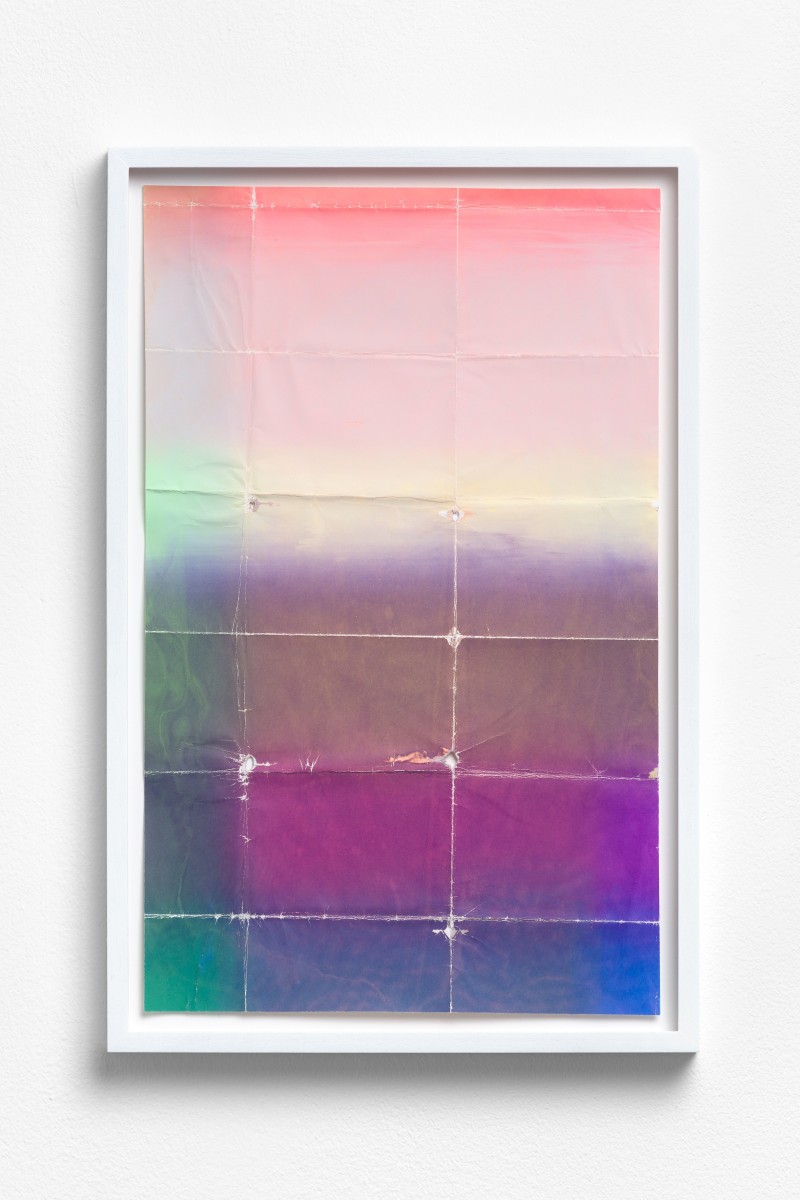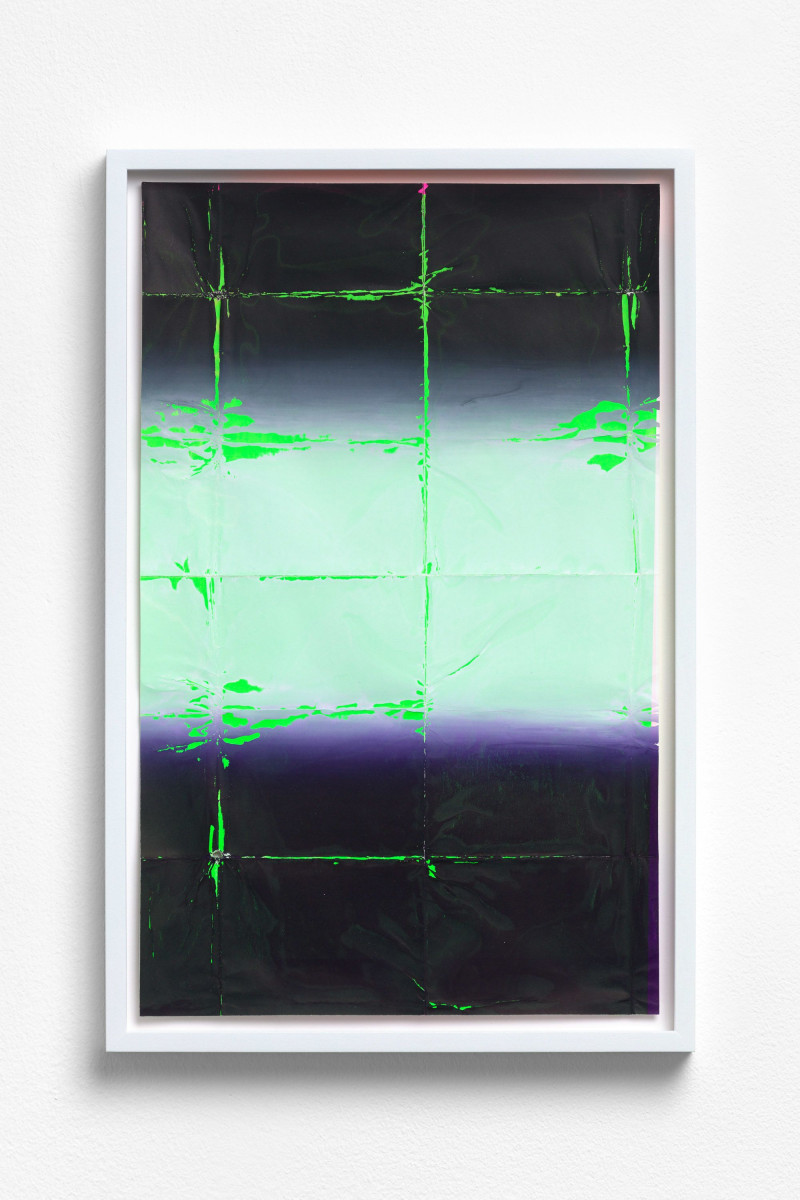10 october 2023, Wouter van den Eijkel
The studio of... Vincent Uilenbroek
Vincent Uilenbroek specialises in screen printing. In his studio in the city centre of Haarlem, he explores the possibilities that this technique offers because he believes there is still much to be discovered. His recent series Unfold is based on the posters of bands that he used to put in his pocket as a teenager and on which a grid of worn creases was created. Uilenbroek saw the possibilities this grid offered and subsequently created the Unfold Repress and Unfold Inverse series. Last weekend he presented a new artist’s book at Art on Paper Brussels, or rather, 15 new artist's books given that every book is unique.
Where is your studio and what does it look like?
Mijn studio bevindt zich in het oude Magdalenaklooster in het centrum van Haarlem.
My studio is located in the old Magdalen Monastery in the centre of Haarlem. The monastery was built in 1475. After the Spanish occupation, it served various functions, including as a poor children's home and garrison hospital. Around 1800, a section was added and the original monastery was demolished to make room for the De Spaarnestad printing company. Since 2019 I have been here as part of the Horizonverticaal artist collective, together with four other artists. My studio is a bright space with high ceilings, where I can store a lot of screen printing equipment.

Vincent Uilenbroek, Unfold Repress, 2023, galerie dudokdegroot
What is a typical workday in your studio?
I usually start at 8:30 am and work until around 5 pm. When I'm working on my own work, I start with preparations, which is time-consuming with screen printing. It is a very important stage, however, because if something goes wrong during preparation, it will affect the result. This is followed by the printing process and it is important that the colours are all mixed well and have the right viscosity. If there is a good basis for a series of works, I can do quite a few print runs at a good pace. Since my work is always unique and many layers are printed on top of each other, it usually takes time before each work is finished.
Your focus is on screen printing. Do you remember what first attracted you to this technique?
I remember when I had my first solo exhibition and my designs were printed on T-shirts. People could choose a design and the image was printed on the spot. It was the first step towards eventually mastering the technique and using it for my art.

Vincent Uilenbroek, Unfold, 2023, galerie dudokdegroot
What is so special about this technique that you decided to specialise in it and screen print almost exclusively?
You can use screen printing in so many different ways, not only as a reproduction technique, but also to create originals. It is possible to work very precisely and graphic, but also in a painterly way, from raster graphics to solid areas of colour. I don't actually use it as a medium to make flat work but to suggest spaces. In my opinion, the technology, popularised in the 1960s by Andy Warhol and others, has not lost any of its power. There is so much to discover simply by expanding the range of possibilities in technology.
For the Unfold series that was recently on display at dudokdegroot and at Art on Paper Brussels, you carried the sheets of paper in your pocket for a while. Why?
I came up with the idea for this series when I had some printed test sheets in my studio that reminded me of the posters of bands I used to keep in my pocket. The creases that develop in the image, which is actually wear and tear, visibly suggest a sense of the time that has elapsed. This inspired the Unfold series.

Vincent Uilenbroek, Unfold Repress, 2023, galerie dudokdegroot
In addition to Unfold, you have made the series Unfold Repress and Unfold Inverse. How do they relate to each other?
With its creased grid, the Unfold series forms the basis from which the other two series emerge. In the Unfold Repress series, I printed over the work a second time to emphasise the creases, and because of the height differences, ink remained in the screen at the creases. I could then print this ink again on a clean white sheet, which resulted in the Unfold Inverse series in which only the creases are printed as a negative. It is a process work in three different guises with the creased grid as a fixed value.
What is the best compliment you’ve ever received about your work?
Someone told me once that the work made her feel emotional – in the best sense of the word. If art can touch you, no words are needed. That is the power of the image.

Vincent Uilenbroek, Unfold Inverse, 2023, galerie dudokdegroot
What are you working on right now?
I’ve just finished an artist book. My second one. It contains 15 unique pieces and will be launched at Art on Paper Brussels. I'm very curious to see how it will be received. In these books, I come up with fresh, new ideas for myself because I can express a certain open-mindedness in them. I then take those ideas into account when producing new work.
